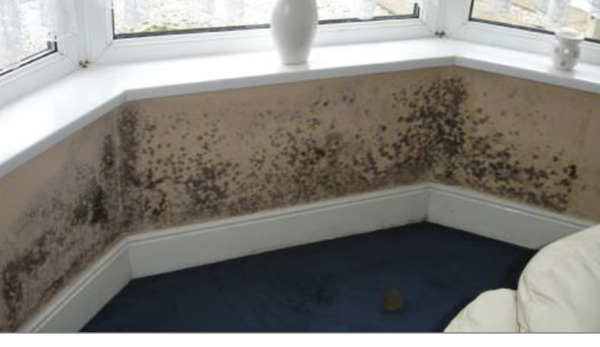How to tackle mould this winter

With over 11.8 million people living with damp and mould issues in the UK, there’s never been a better time to share some handy prevention tips to avoid damage to your home and your health.
The key concern about mould isn’t always its appearance, it’s the potential health hazard it poses. Mould can produce allergens, irritants or even toxins that vulnerable groups such as the elderly, those with respiratory conditions and young children may be seriously affected by.
This year as the cost of living crisis bites and energy prices soar more people than ever are keeping their heating low. As the UK temperatures drop and the weather is even wetter, all types of homes are at risk of developing mould. From homes with damp basements or residencies with insufficient ventilation to poor heating systems. While these structural issues require substantial financial investment to correct, we are happy to reveal how to prevent mould from becoming a dangerous problem quickly and efficiently.
Where in your home to check for mould
Mould is found throughout the home, particularly where moisture accumulates in bathrooms around showers and in corners. The kitchen is also particularly prone to mould around sinks and dishwashers, be sure to check these areas regularly. Windows and window sills can see an accumulation of condensation which leads to a build up of mould, check and maintain these areas throughout the year. A huge cause of mould is poor ventilation. Be sure to inspect basements and cellars that are prone to dampness, walls and ceilings, behind furniture, closets and storage spaces and in crawl spaces where limited airflow can create mould.
Five hacks to prevent mould
Prevention is always better than cure, so we have 5 HG hacks on how to combat mould everyday:
- Ventilate and air your home. When cooking, showering or if you need to dry clothes indoors be sure to open a window, also and try to keep the home as clutter free as possible to help the air circulate. It is a little known fact that ventilation prevents high heating bills. Fresh air heats up faster than stale air, so be sure to open a window or a door at least 15 minutes to half an hour everyday, even during autumn and winter.
- Pay attention to kitchens and bathrooms. As the most common sites for mould and damp keep doors to these rooms shut to contain moisture, also maintain extractor fans to keep them clean and fully working.
- Regular cleaning. Tackle mould spots as they occur to prevent them developing them into a hazard.
- Properly insulate your home. By sealing your home to prevent cold areas, you can reduce condensation. Be sure to seal windows and doors to prevent moisture.
- Monitor humidity. to keep indoor humidity levels low by using dehumidifiers in damp areas, especially basements.
If you need more information on how to manage mould in your home check out https://hg.eu/uk/tips/how-to-get-rid-of-mould




